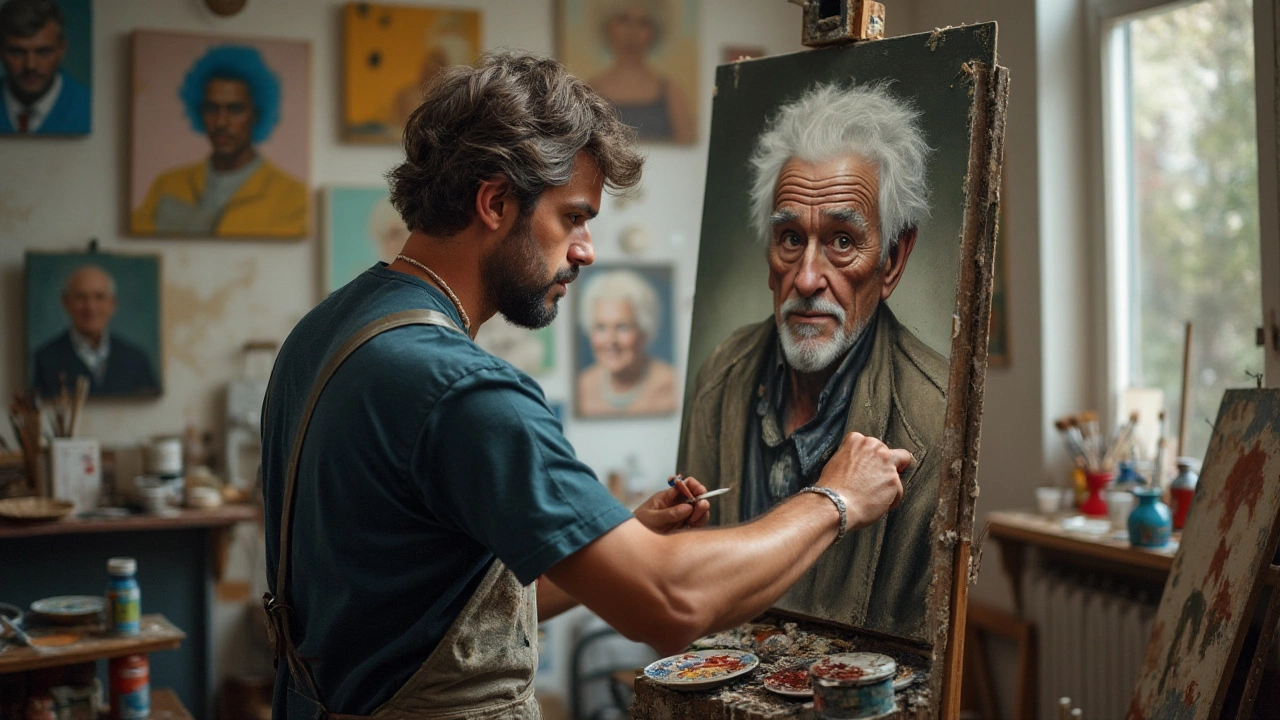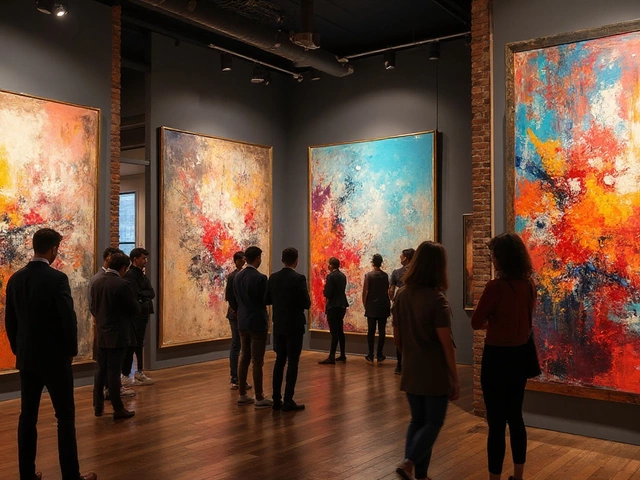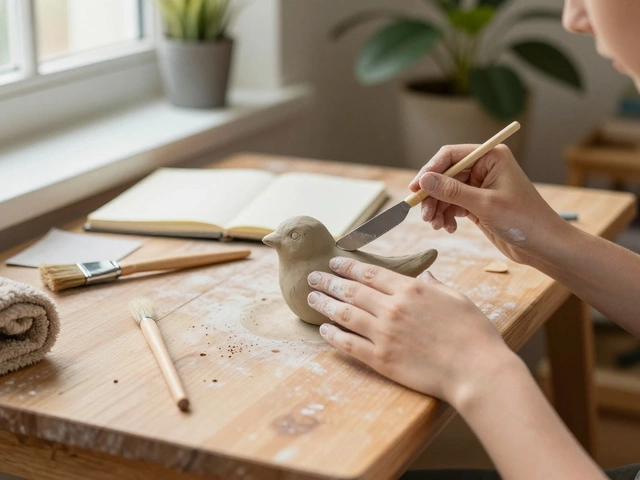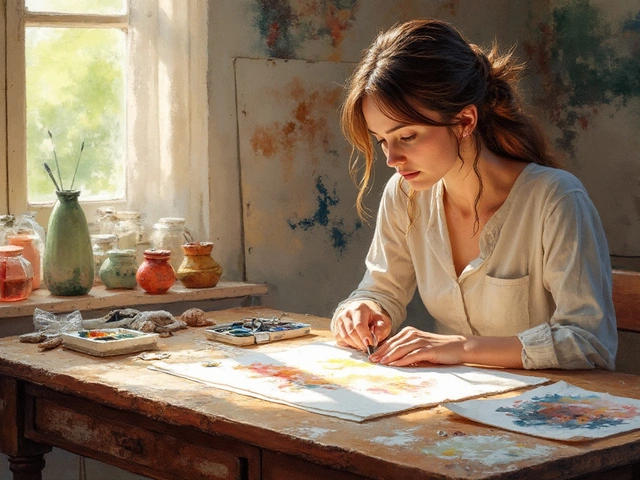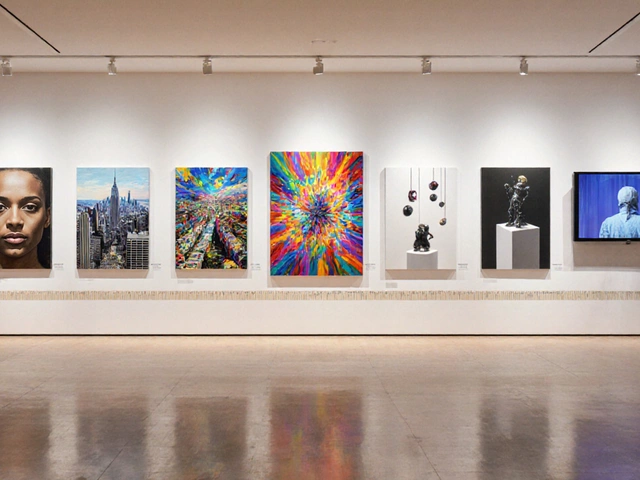Diving into the world of realistic portrait paintings might seem like venturing into the sense of elegance and emotion captured on canvas. Whether it's tenderness in a child's smile or wisdom in an elder's eyes, a portrait brings stories to life through detailed strokes and colors. However, many aspiring art collectors and enthusiasts often wonder: what shapes the cost of such intricate artwork?
Understanding the multitude of factors that influence the cost of realistic portrait paintings can help demystify this timeless art form. From the experience of the artist wielding the brush to the choice of canvas and paints, each decision plays a role in determining the overall expense. This article breaks down these components, offering insights and tips for those considering commissioning their very own piece of art. By unraveling the layers of pricing, we open doors to a personalized and fulfilling art-buying experience.
- Factors Influencing the Cost
- Artist’s Skill and Experience
- Material and Medium Used
- Sizes and Details
- Commissioning Tips
Factors Influencing the Cost
Exploring the cost of a realistic portrait requires peeling back several layers influencing pricing. Much like any art form, a portrait is a composition of both tangible and intangible elements. The first significant factor is the artist’s skill and reputation. A seasoned artist with a plethora of realistic paintings is likely to charge more than someone newer to the craft. Reputation in the art world can heavily impact pricing, where established artists not only charge for their expertise but also their time-proven ability to produce mesmerizing pieces.
“The value of art is in the eyes of the beholder, but the price reflects the mastery of the hand that creates it,” remarked Daniel R. Littler, an art critic.Many buyers are willing to pay a premium for a name that carries weight and prestige within the artist community.
The materials used in creating the portrait play a substantial role as well. Opting for high-quality canvases and top-tier oil paints can significantly add to the cost. For example, using archival materials ensures the portrait withstands the test of time without losing its luster, which appeals largely to collectors seeking to invest in longevity. Even the type of medium can shift the budget, with oils and pastels often being more expensive compared to watercolors or graphite. Historical data shows that such decisions can affect artwork valuations up to 30% in certain markets.
Size and complexity of the composition also drive prices higher. A larger canvas not only requires more material but presents a greater surface area for an artist to fill detailed depictions. The intricacies embedded in backgrounds or supplementary elements like pets, detailed fabrics, or complex hairstyles add layers of difficulty, necessitating more time from the artist. Moreover, clients often have specific requirements or customizations they wish to include, personal touches that make a portrait priceless to them but come with additional costs. An intricate background with historical elements, for example, requires a deep dive into research and deliberate attention to bring it to life on the canvas.
Last but certainly not least is the geographical factor. Artists based in regions with high living costs frequently pay more for studio rentals and supplies. This geographic variable can cause significant fluctuations in pricing, which is why commissioning a portrait painting in New York might not mirror the cost of one created in a smaller city. A
| Region | Average Cost |
|---|---|
| Big Cities | $3,000 - $5,000 |
| Small Towns | $500 - $2,000 |
Artist’s Skill and Experience
When contemplating the cost of a realistic portrait, the artist’s skill and experience serve as monumental influences on the price. An artist's journey is often reflected in their mastery over realistic paintings. Artists who have honed their craft over years, possibly even decades, bring a depth of expertise to each stroke of the brush. Such proficiency allows for not only aesthetically pleasing work but also pieces that evoke emotion and realism. For instance, capturing the delicate play of light on a subject’s skin or the subtle nuances of expression requires a level of finesse that can only be achieved through intense practice and dedication.
The fine distinctions between artists often lie in their familiarity with different techniques and styles. Some may excel at hyper-realism, rendering works that almost seem sharper than reality itself, while others might integrate impressionistic elements, conveying movement and vitality in their subjects. This is why seasoned artists, who boast a robust portfolio and historical reliability in bringing visions to vivid life, might command higher fees. Their past work stands as testament to their ability to meet and often exceed client expectations.
"An artist’s worth is not just in the art they produce today, but in the years they've carried the brush," says renowned art critic Lionel Greenwald.Understanding this synergy of skill and experience helps patrons appreciate the price associated with their custom piece.
The Growth of Reputation
An artist's reputation significantly affects the cost of a commissioned piece. Those who have made a name for themselves through exhibitions or publications can attract both higher esteem and clientele willing to invest more in their work. This sought-after status often comes from years of proven dedication to their craft, allowing for demonstrable achievements that say as much about the artist as they do about the art. Successfully translated artistic vision into cultural and social relevance can increase an artist's perceived value by art connoisseurs and buyers alike. For instance, portrait artists like John Singer Sargent, once established, never faced a lack of commissions despite high fees because the value attached to owning their works extended beyond aesthetic pleasure to cultural prestige.
Moreover, the implications of an artist’s name on a portrait can tangibly affect its valuation. Art priced by a well-respected creator can indeed become heirloom pieces, accruing both sentimentality and monetary value over time. This potential for investment makes the reputation of the artist an essential consideration for many buyers determinedly looking at an art as long-term commitments. Although newer or lesser-known artists may present more affordable options, patrons find assurance in knowing that seasoned artists are trusted to produce stunning, accurate portrait painting. This, coupled with a personalized process that experienced artists maintain to impart their expertise, forms another bedrock to the price in infusing a realistic portrait with timeless appeal.
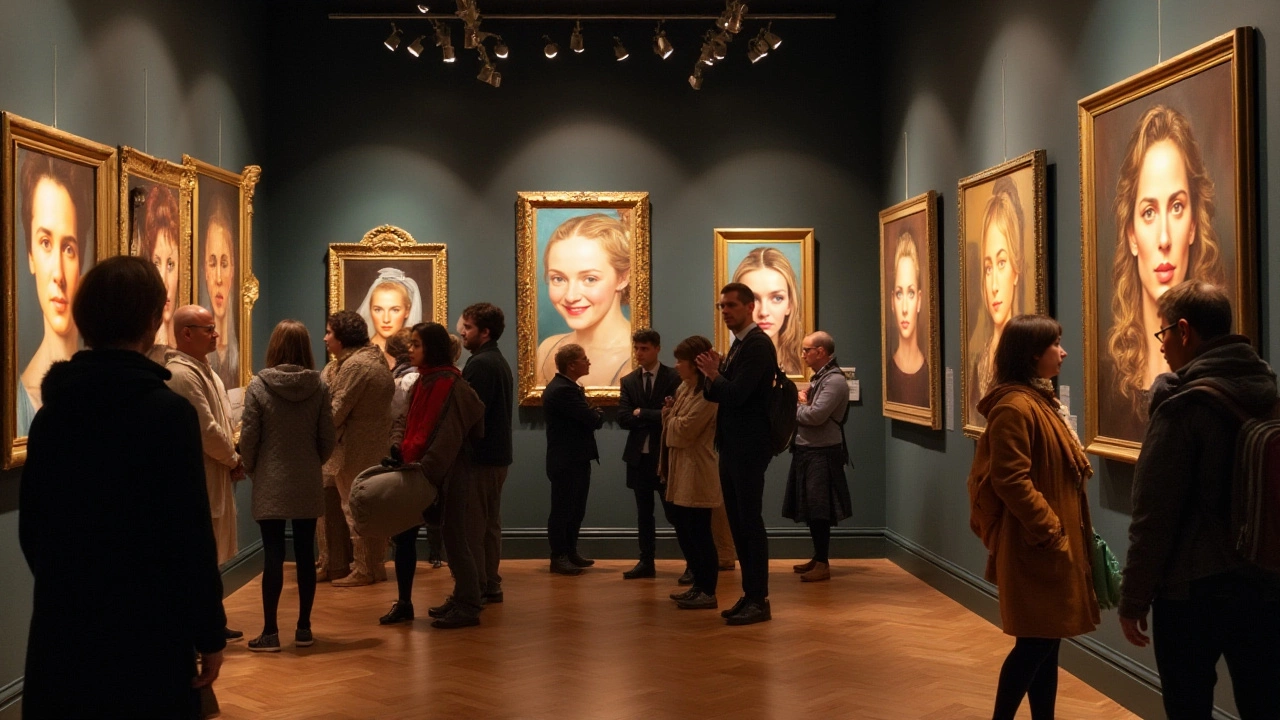
Material and Medium Used
The choice of material and medium is a pivotal factor influencing the cost of portrait paintings. Artists use a variety of materials ranging from traditional oil paints to modern digital tools, each offering its own set of unique characteristics and challenges. The type of medium selected not only affects the texture and tone of a portrait but also plays a significant role in the artist's vision and the final outcome of the piece.
Take oil paints, for example, a favorite among many traditional artists for their rich texture and timeless appeal. This medium requires an intricate layering technique, where each coat must dry before the next is applied. This can often add to the timeframe and cost. The canvas used might also be of various grades, from cotton, which is budget-friendly, to linen, which is generally more expensive due to its durability and luxurious finish. The quality of the canvas can significantly impact the lifespan of the artwork, warranting careful consideration when commissioning a piece.
On the other hand, watercolor portraits, which are known for their delicacy and translucence, typically demand high-quality, thicker paper to prevent warping. These portraits, often less expensive than oil, offer a dream-like quality that appeals to those desiring a softer finish. Watercolors can capture a likeness with remarkable subtlety, but they require a skilled hand to manage the fluid and unpredictable nature of the medium without making errors.
"The materials we choose to work with are an extension of our artistic spirit and fundamentally shape the stories we tell," reflects renowned portrait artist Emma Thompson.
In the realm of digital art, the costs pivot around the technology and software used. Digital portraits eliminate material costs like paints or canvases but require investment in software licenses, drawing tablets, and often high-performance computers. This medium is gaining popularity for its versatility and the ease of reproduction, though some argue it lacks the original's tactile emotion.
Investing in a portrait is about more than just the monetary cost; it's about understanding and appreciating the choices that go into each piece. Whether selecting a traditional canvas or exploring digital possibilities, each option provides a different experience and aesthetic. It's crucial to communicate with the artist about these choices, as they carry both artistic significance and practical implications on the artwork's maintenance and display.
Sizes and Details
When commissioning a realistic portrait painting, one of the pivotal decisions involves selecting the size and level of detail desired in the artwork. The dimensions can significantly impact not just the aesthetic presence of the portrait but also its pricing. Larger canvases demand more materials and time, which naturally elevates the cost. Artists must invest additional hours to meticulously portray emotions, gestures, and spaces on a larger scale, which involves a profound commitment to capturing every intricate characteristic.
The art world recognizes standard sizes such as the intimate 8x10 inches, which is perfect for smaller displays or personal gifts, extending to grandiose pieces spanning 36x48 inches that command attention in any room. A smaller canvas can be charming and personal, ideal for preserving finer details within a focused space. However, for a portrait destined to be a room's centerpiece, opting for a more expansive size can amplify its impact. The choice between these extremes inevitably influences both the atmosphere of a space and the commissioning budget itself.
Beyond size, the level of detail also dictates the pricing structure. Portraits focusing exclusively on the face require an artist to delve deeply into minute nuances—each wrinkle or eyelash demands exceptional precision. In contrast, a full-body portrait, complete with a detailed background, introduces complexity regarding proportionality and composition, adding layers of elements and thereby increasing the fees involved. Portrait artists often spend countless hours ensuring that the subject not only resembles the individual in the photograph but also embodies their spirit.
"The details are not just details. They make the design." — Charles Eames
As the famed designer noted, details bring a creation to life. It holds particularly true for realistic paintings, where every stroke can transform a simple likeness into a vivid tale. Artists may employ advanced techniques like glazing to add depth or underpainting to enhance luminosity—each requiring skillful execution and, indeed, more time. Materials like high-quality oils may be necessary to achieve robust hues and textures, contributing further to the budget. A refined selection of colors, attention to fabric folds, or even the subtle play of light can take a painting from flat to dynamic.
| Size | Price Range (in USD) |
|---|---|
| 8x10 inches | $200 - $500 |
| 16x20 inches | $600 - $1200 |
| 24x36 inches | $1500 - $3000 |
| 36x48 inches | $3500 and up |
For potential buyers, navigating these choices involves deliberating the intended display context and the emotional resonance they wish to obtain. A portrait is not merely a depiction; it's an enduring memoir that should resonate on both personal and artistic levels. Consulting with the artist about size and intricacies can align expectations and outcomes, ensuring a satisfying investment that echoes the unique vision one desires. Amid these considerations, the fusion of size and details ultimately crafts a visual journey that extends far beyond the canvas.
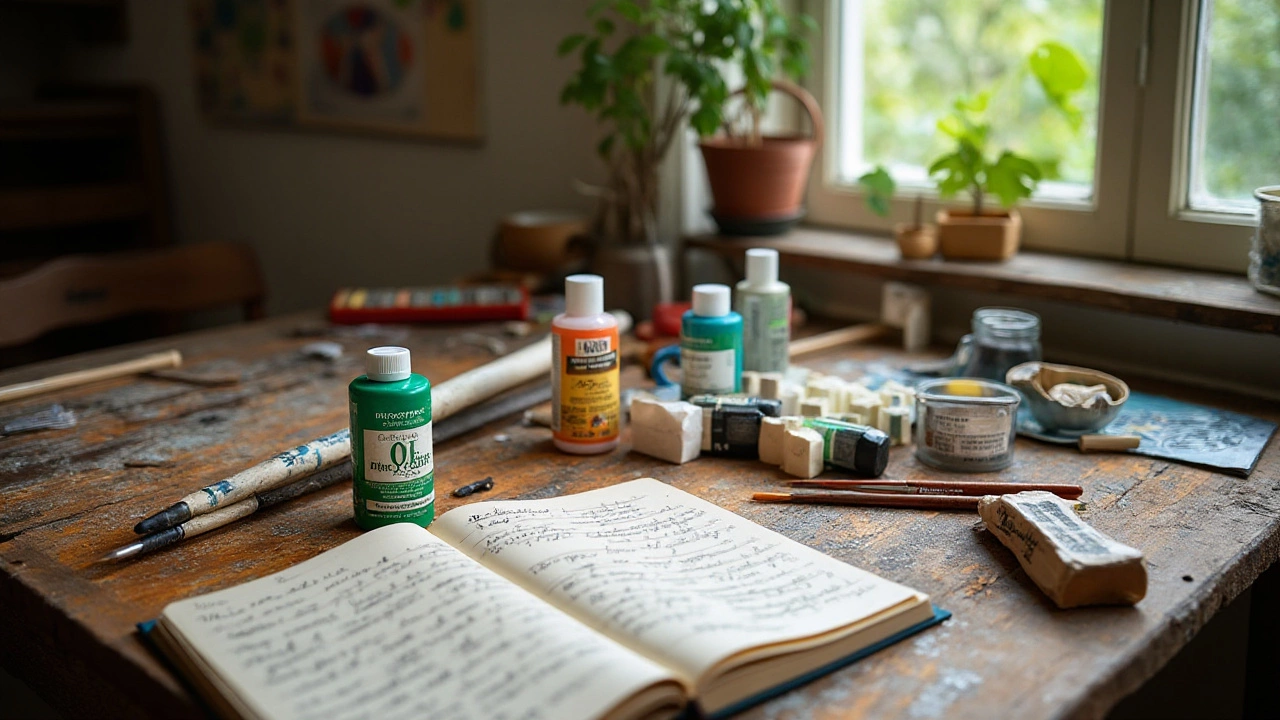
Commissioning Tips
Commissioning a realistic portrait painting is not just a transaction; it's a deeply personal journey that connects the patron with the artist on a profound level. The first step in this endeavor is identifying what truly moves you in a portrait. Is it the emotive expression that captivates you, or the mastery of technique that turns a flat canvas into a breathing likeness? Take time to explore various styles and artists' portfolios. Platforms like Instagram or art galleries in your local area can be treasure troves of inspiration, allowing you to see a range of what modern portrait artists are creating. This exploration phase helps you understand your preferences, making the eventual conversation with an artist more fluid and focused.
Once you've tailored your desired style, it’s crucial to find the right artist whose work resonates with your vision. Artist directories and exhibitions, whether virtual or physical, can be valuable resources in this search. Don't hesitate to reach out to artists directly to inquire about their process and pricing. It's important to understand their timeline, the kind of materials they typically use, and their method of working. Open communication is key, and most artists appreciate patrons who engage sincerely with their work. Consider their expertise, as an experienced artist can command higher fees, but often the investment results in a portrait that not only meets but exceeds expectations.
With the artist selected, discuss the fine details of your commission. This encompasses the size of the portrait, as larger sizes naturally increase the cost, and the level of detail required. Decide on the medium: would you prefer oil, acrylic, or perhaps charcoal? Each has its own feel and pricing structure. Ensure that you specify all these aspects upfront to avoid misunderstandings later. Remember, while some might find a simple bust effective, others may desire a full-body pose set within an elaborate background. Be clear about what you expect, but also be open to the artist's creative input—their expertise can elevate your vision into something truly extraordinary.
"Commissioning art is about trust," says renowned art critic John Canaday. "It's an exchange of respect and vision between patron and artist."Consider drafting a contract that outlines all the discussed terms, including cost, delivery timeline, and any potential revisions. A clear agreement protects both you and the artist, ensuring that everyone is on the same page. Finally, get a sense of how to care for your new portrait; often, artists provide guidelines on maintaining the longevity of your commissioned piece. This care can preserve the vibrancy and allure of your artwork across generations, turning it into a cherished family heirloom.
